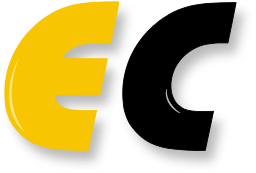EDTconf25: 2nd International Conference on Engineering Digital Twins University of Michigan - Ann Arbor Online & Michigan, MI, United States, October 6-7, 2025 |
| Conference website | http://www.edtconf.org/ |
| Submission link | https://easychair.org/conferences/?conf=edtconf25 |
| Abstract registration deadline | June 27, 2025 |
| Submission deadline | July 2, 2025 |
2nd International Conference on Engineering Digital Twins (EDTconf)
- Call for Papers -
Co-located with MODELS 2025 | October 6–7, 2025, Online & Michigan, US | www.edtconf.org
Digital Twins (DTs) have emerged over the last decade as a key approach to better understand, use, monitor, and improve systems in a broad range of application domains, including agriculture, automotive, avionics, construction, health care, manufacturing, smart cities, and many more. DTs are based on the use of data and models, and their development requires the integration of different technologies for diverse purposes, including design-space exploration, virtual commissioning, and predictive maintenance. Their development is a multi-disciplinary process that requires the collaboration of experts from different disciplines and application domains. This includes software engineers at the core of the DT engineering process to architect, develop, deploy, test, evolve, and validate the DT software, but also engineers from other engineering disciplines with domain expertise in the specific aspects of the DTs. Even though the use of DT is growing at a fast pace, their development is still generally conducted in an ad hoc manner. The lack of systematic frameworks and approaches represents a main obstacle to the rapid and scalable development of industrial DTs.
The International Conference on Engineering DTs (EDTconf) aims to bring together researchers and practitioners working on DTs, from both academia and industry, and from different engineering disciplines and application domains to shape the future of systematically designing, developing, deploying, evolving, maintaining, and analyzing DTs.
Important Dates
|
|
Topics
Topics of interest include, but are not restricted to:
|
|
Submission Guidelines
- Regular papers (max 10+2 pages): Regular papers present novel research on any aspect of the engineering of DTs. They must clearly describe the engineering methods used, which can be model-based but can also use other engineering techniques, describe the engineering challenge addressed, and provide substantive evaluation – for example in the context of a case study.
- Vision and New Ideas papers (max 6+1 pages): These papers present new ideas and research directions in the engineering of digital twins, which may not yet be full developed or evaluated. Papers must clearly explain the challenge, describe an engineering-based solution idea, and explain the difference to the current state of the art as well as the expected benefits of realizing the solution idea.
- Tool demonstration papers (max 4+1 pages): These papers focus on the tooling aspects of engineering DTs. A good tool paper focuses on practical insights that are likely to be useful to other implementers or users of DTs in the future. Any of the aforementioned topics of interest are appropriate areas for tool demonstrations. For reviewing purposes, these papers must include an appendix (which will not be published) with a demo outline / screenshots and/or a short video/screencast illustrating the tool, as well as possibly providing links to online material.
- Exemplar papers (max. 6+1 pages): Implementations or detailed specifications of DTs in different application domains. These papers must include details about the engineering approach taken in developing the DT; that means they cannot simply describe what the DT does but must include details of how the DT was developed. They should also include lessons learned that have the potential of being transferred to other DT engineering projects. We strongly recommend that these papers come with an appendix with screenshots and / or a short video / screencast illustrating the DT, as well as possibly providing links to online material or further information about the DT.
Formatting instructions are available at IEEE Proceedings Template for both LaTeX and Word users. LaTeX users must enable the conference format. Manuscripts must be submitted via EasyChair (https://easychair.org/conferences/?conf=edtconf25).
By submitting to EDTconf 2025, authors acknowledge that they are aware of and agree to be bound by the IEEE Author Rights and Responsibilities. In particular, papers submitted to EDTconf 2025 must not have been published elsewhere and must not be under review or submitted for review elsewhere while under consideration for EDTconf 2025. The page limit is strict; it will not be possible to purchase additional pages at any stage of the process. Submissions that do not adhere to the page limits or that violate the formatting guidelines will be desk-rejected without review. IEEE requires the use of ORCIDs. LaTeX users should use the "orcidlink" package, \hypersetup{pdfborder={0 0 0}}, and \orcidlink{XXXX-XXXX-XXXX-XXXX} after each author name.
Selected Best Regular Papers with Journal Option
Authors of selected best regular papers will be invited to submit revised and extended versions for publication in a dedicated special section in the Journal on Software and Systems Modeling (SoSyM). Selected papers will be expected to comply with the standard guidelines of SoSyM when publishing an extended version of a paper, including the addition of at least 30% new material.
Conference Organizers (info@edtconf.org)
General and Program Co-Chairs
- Romina Eramo, University of Teramo, IT
- Manuel Wimmer, Johannes Kepler University Linz, AT
- Steffen Zschaler, King’s College London, UK
Publicity & Web CoChairs
- Claudio Gomes, Aarhus University, DK
- Vittoriano Muttillo, University of Teramo, IT
